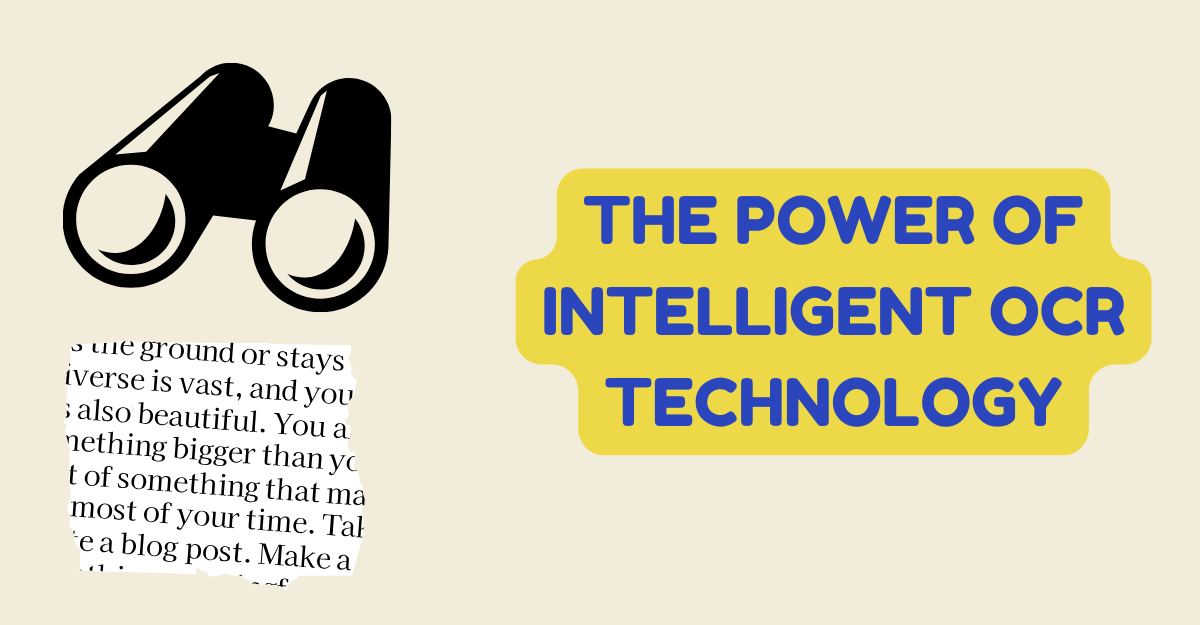
The Power of Intelligent OCR Technology
In an era dominated by data, the ability to efficiently extract and process information from various sources is crucial. Enter Intelligent Optical Character Recognition (OCR) technology, a revolutionary advancement that transcends traditional OCR capabilities. This powerful technology harnesses the prowess of artificial intelligence and sophisticated algorithms to redefine the way we interact with and extract valuable insights from documents, images, and more.
Understanding Intelligent OCR Technology
At its core, OCR technology is designed to convert different types of documents, such as scanned paper documents, PDFs, or images, into editable and searchable data. Traditional OCR has long been a staple in digitizing text, but the emergence of Intelligent OCR takes this process to a whole new level.
Intelligent OCR is not just about recognizing characters; it’s about understanding the context, layout, and meaning behind the text. This is achieved through the integration of machine learning algorithms and advanced pattern recognition techniques. These systems learn from vast datasets, continuously improving their ability to accurately interpret and extract information from diverse sources.
Enhanced Accuracy and Adaptability
One of the key strengths of intelligent OCR lies in its unparalleled accuracy. Traditional OCR systems often struggle with complex layouts, handwritten text, or documents with varied fonts. Intelligent OCR, on the other hand, can adapt to these challenges, providing a much higher level of accuracy even in the face of diverse and dynamic content.
The technology’s adaptive nature allows it to handle a wide array of document types, from invoices and receipts to legal contracts and handwritten notes. This adaptability is particularly valuable in industries where document diversity is the norm, such as finance, healthcare, and legal services.
Efficient Data Extraction and Processing
Intelligent OCR not only accurately extracts text but also understands the relationships between different pieces of information. This capability is invaluable in scenarios where data extraction involves more than just simple character recognition.
For instance, in an invoice processing system, intelligent OCR can identify relevant information such as invoice numbers, dates, and amounts due. It can then organize this data into structured formats, facilitating seamless integration into databases or other systems. This level of automation not only reduces the risk of errors but also significantly speeds up data processing workflows.
Applications Across Industries
The impact of intelligent OCR technology extends across a spectrum of industries. In finance, it streamlines the processing of invoices, receipts, and financial statements. In healthcare, it aids in the digitization of patient records and facilitates quick access to critical information. Legal services benefit from the efficient extraction of data from contracts and legal documents, improving overall productivity.
Moreover, the technology plays a pivotal role in enhancing the accessibility of information for individuals with visual impairments. By converting printed or handwritten text into digital formats, intelligent OCR contributes to a more inclusive and equitable society.
Challenges and Future Developments
While intelligent OCR has made significant strides, challenges persist. The technology’s performance can be impacted by the quality of input documents, and handling highly unstructured content remains a hurdle. However, ongoing research and development efforts aim to address these challenges, with innovations such as deep learning models and improved image processing techniques.
Looking ahead, the future of intelligent OCR holds promise. As technology continues to evolve, we can anticipate even greater accuracy, speed, and versatility. The integration of OCR with other emerging technologies, such as natural language processing and blockchain, opens up new possibilities for data management and security.
Conclusion
The power of intelligent OCR technology lies in its ability to transform how we extract, understand, and utilize information. As industries increasingly rely on data-driven decision-making, the role of intelligent OCR becomes paramount in unlocking the full potential of digitized content. This technology is not just a tool for text recognition; it is a catalyst for efficiency, accuracy, and innovation across diverse sectors, shaping the way we interact with information in the digital age.






